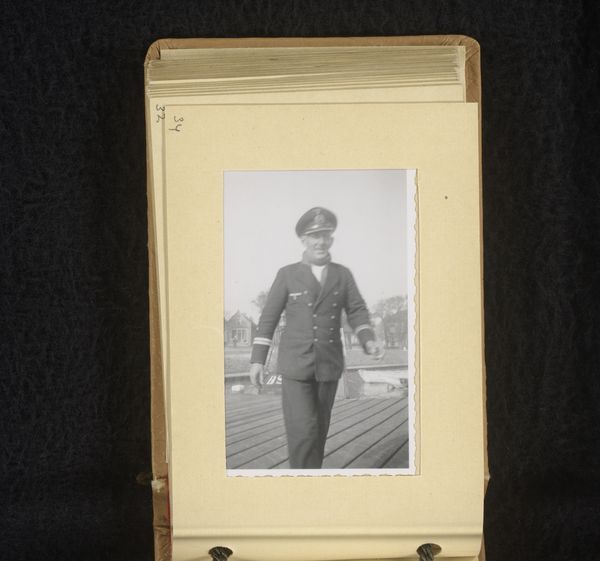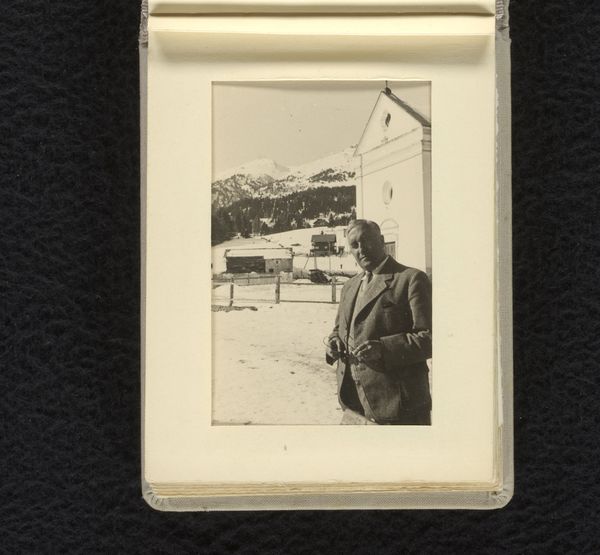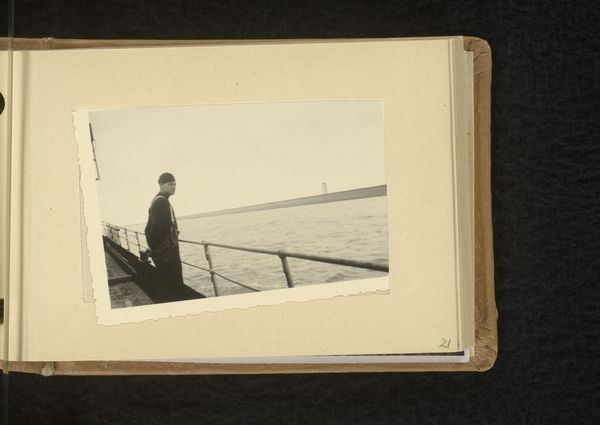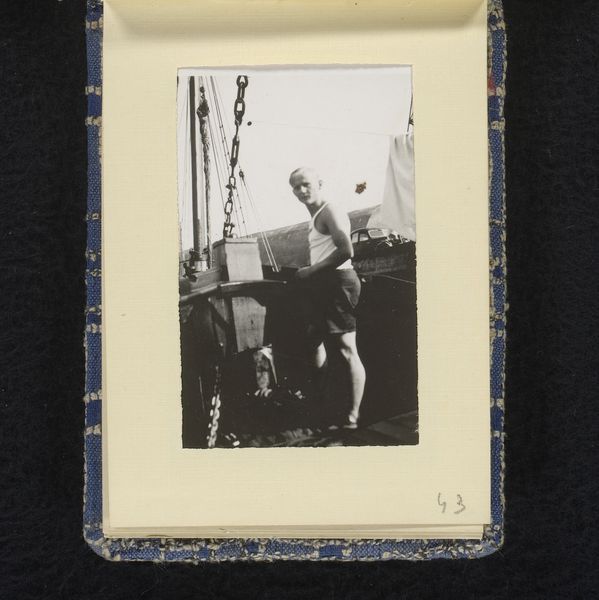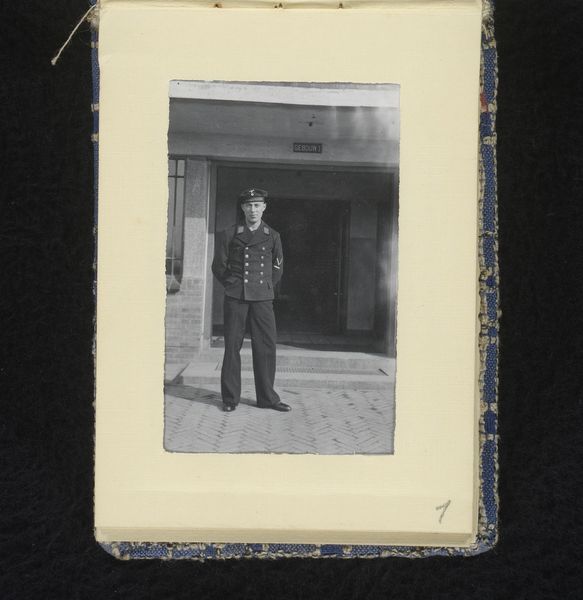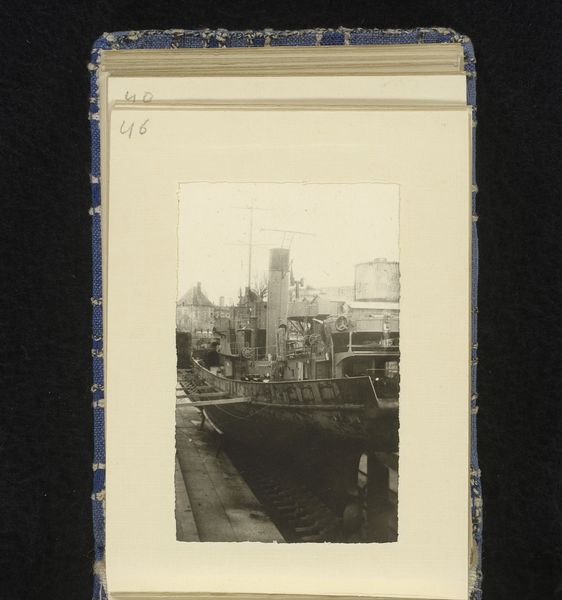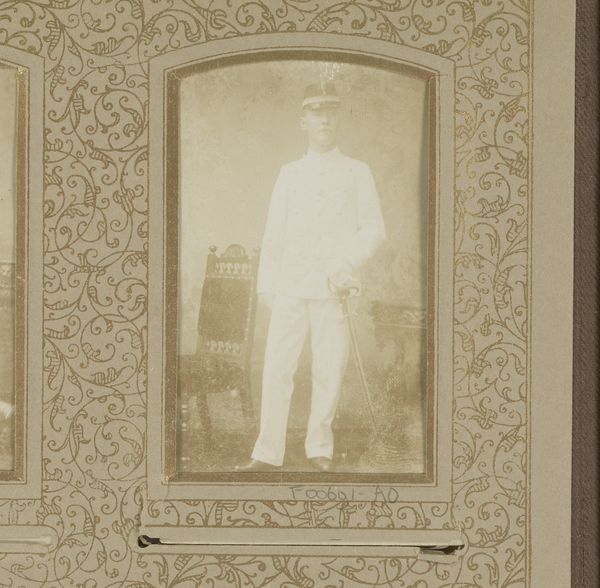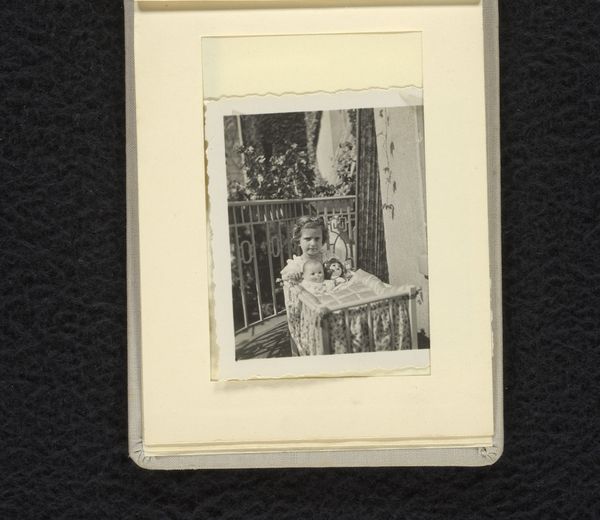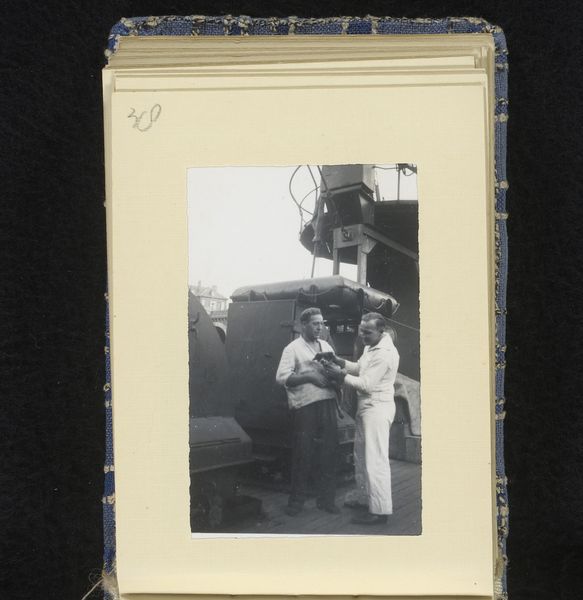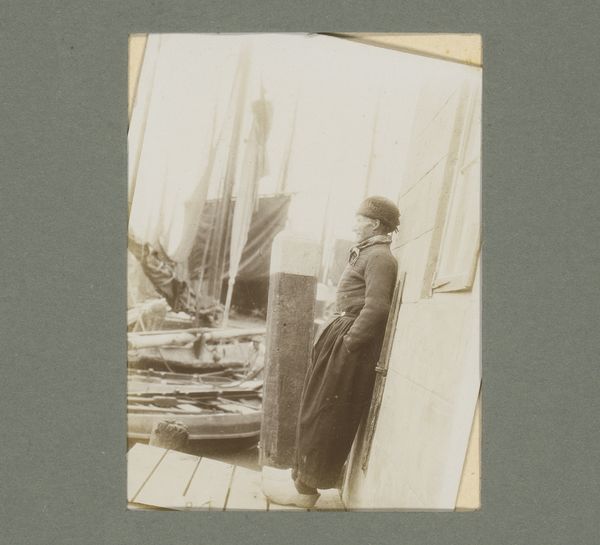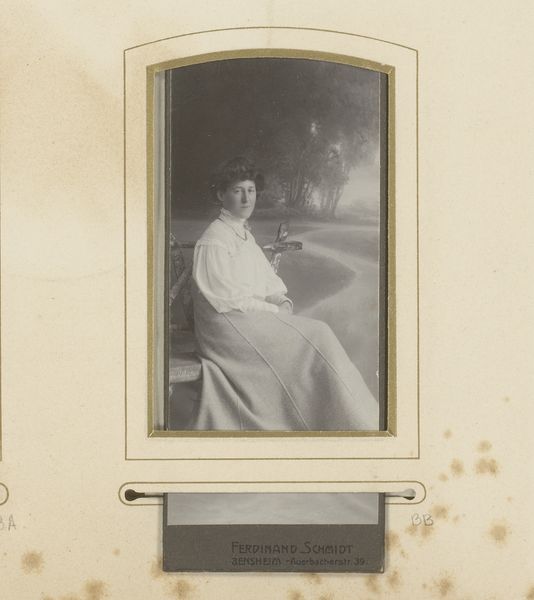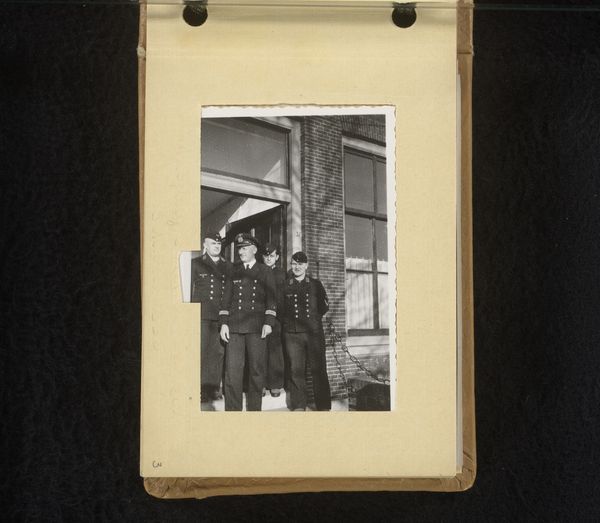
photography, gelatin-silver-print
#
portrait
#
photography
#
gelatin-silver-print
#
history-painting
#
realism
Dimensions: height 90 mm, width 60 mm, height 85 mm, width 120 mm
Copyright: Rijks Museum: Open Domain
Editor: Here we have an anonymous gelatin-silver print from between 1940 and 1943, titled "Militair van de Kriegsmarine op zijn schip," which translates to "Soldier of the Navy on his Ship." The portrait feels surprisingly candid, considering the context of World War II. How do we reconcile this informal snapshot with the weight of its historical period? Curator: That's a great observation. The photograph's power comes precisely from this tension. Official wartime imagery often strives for grandeur and propaganda, but this image, likely a personal photograph slipped into an album, shows us a different story. How does seeing it displayed now, decades later in the Rijksmuseum, alter your understanding of its original intent and meaning? Editor: I guess it feels more…complex? The man's relaxed pose contrasts starkly with what we know of the Kriegsmarine and the Nazi regime. Is that dissonance deliberate on the photographer's part, or is it just happenstance? Curator: It's difficult to ascertain the photographer's intent without further context. However, we can consider how the act of preserving and then exhibiting images like these changes our understanding of war and individual experience. It humanizes the "enemy," challenging simplistic narratives of good and evil. Do you think this changes our responsibilities as viewers? Editor: Definitely. It makes me realize the importance of looking beyond surface appearances. This image feels like a small window into a much bigger, murkier past, reminding us that historical narratives are always constructed and contested. I hadn't thought about the museum's role in shaping that narrative too! Curator: Exactly. Museums aren't neutral spaces; they actively participate in the interpretation of history. By showcasing photographs like these, they prompt us to grapple with the complexities of the past and question the stories we tell ourselves. It's a powerful reminder that history is not fixed, but something we constantly reinterpret.
Comments
No comments
Be the first to comment and join the conversation on the ultimate creative platform.
